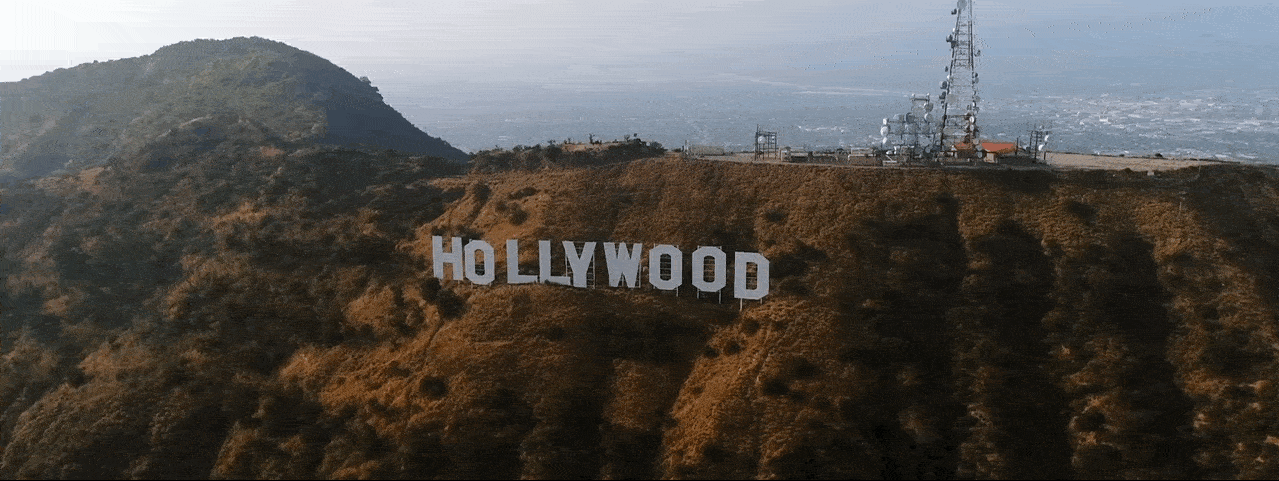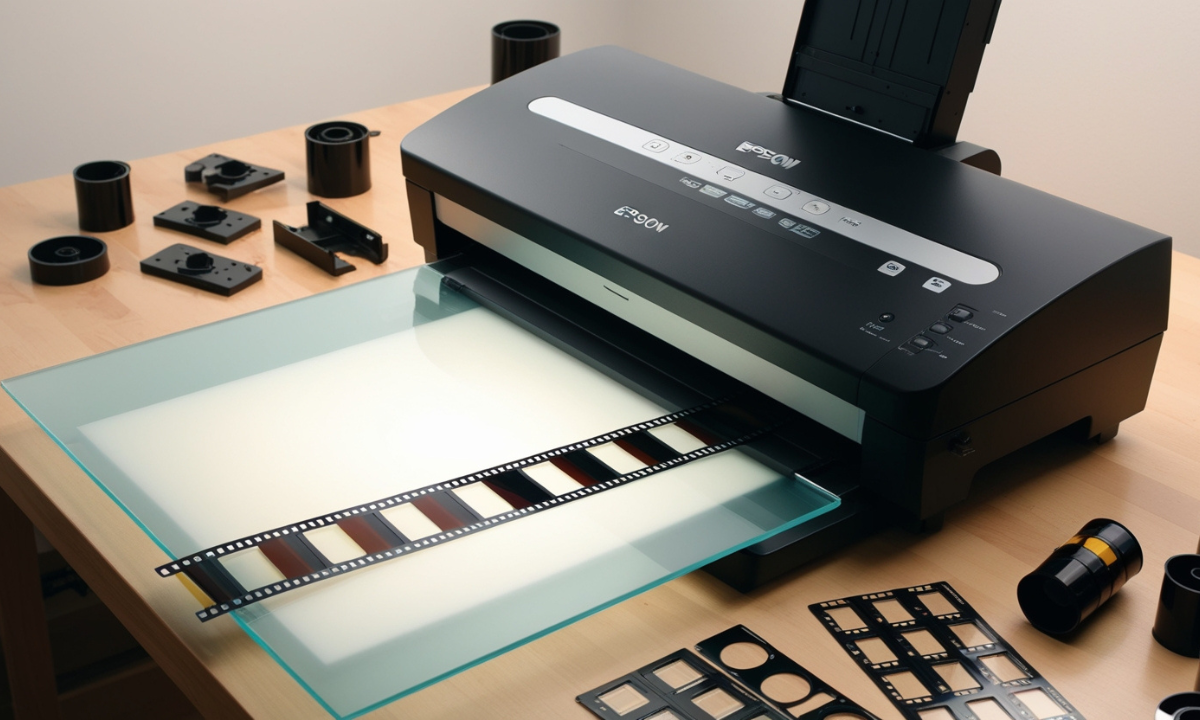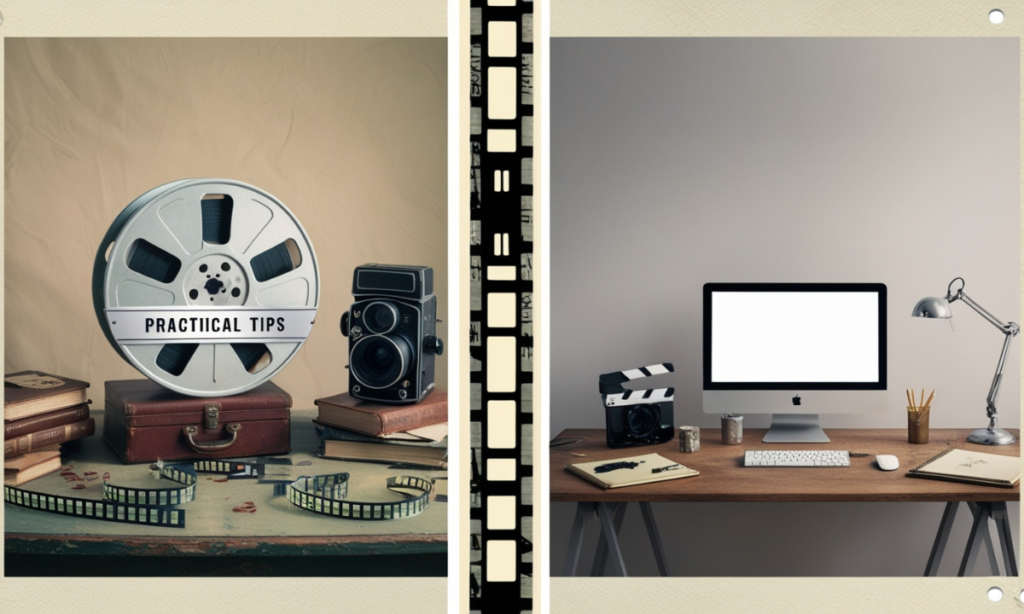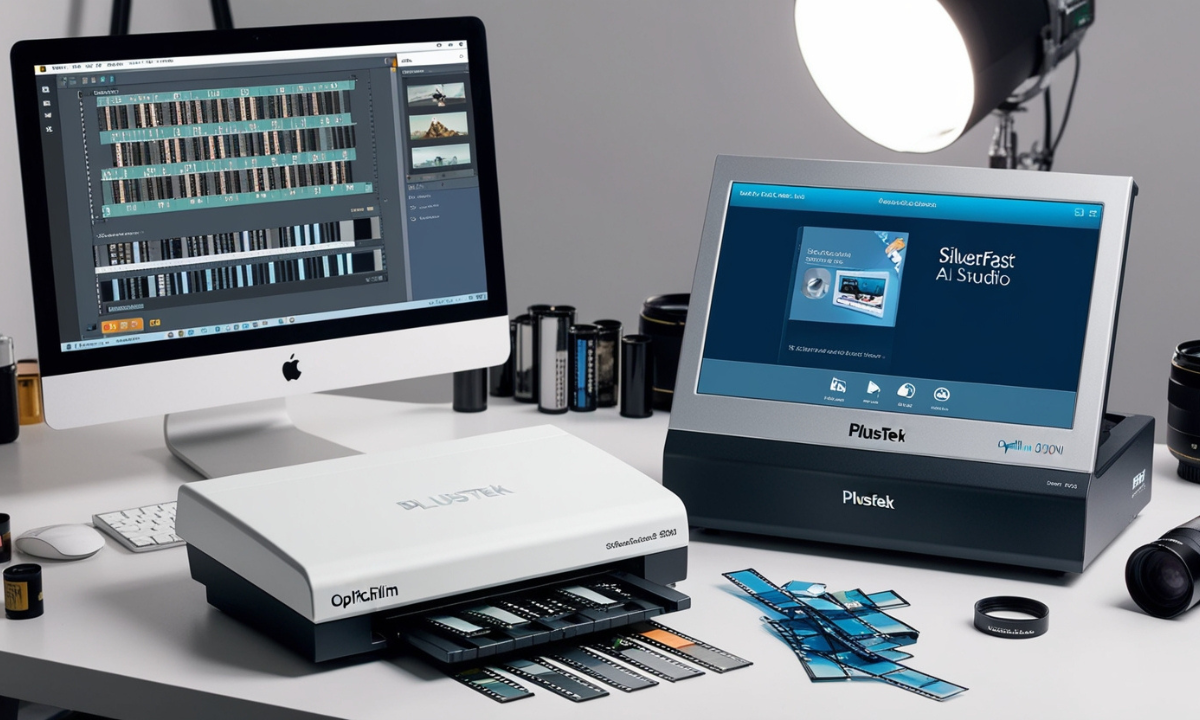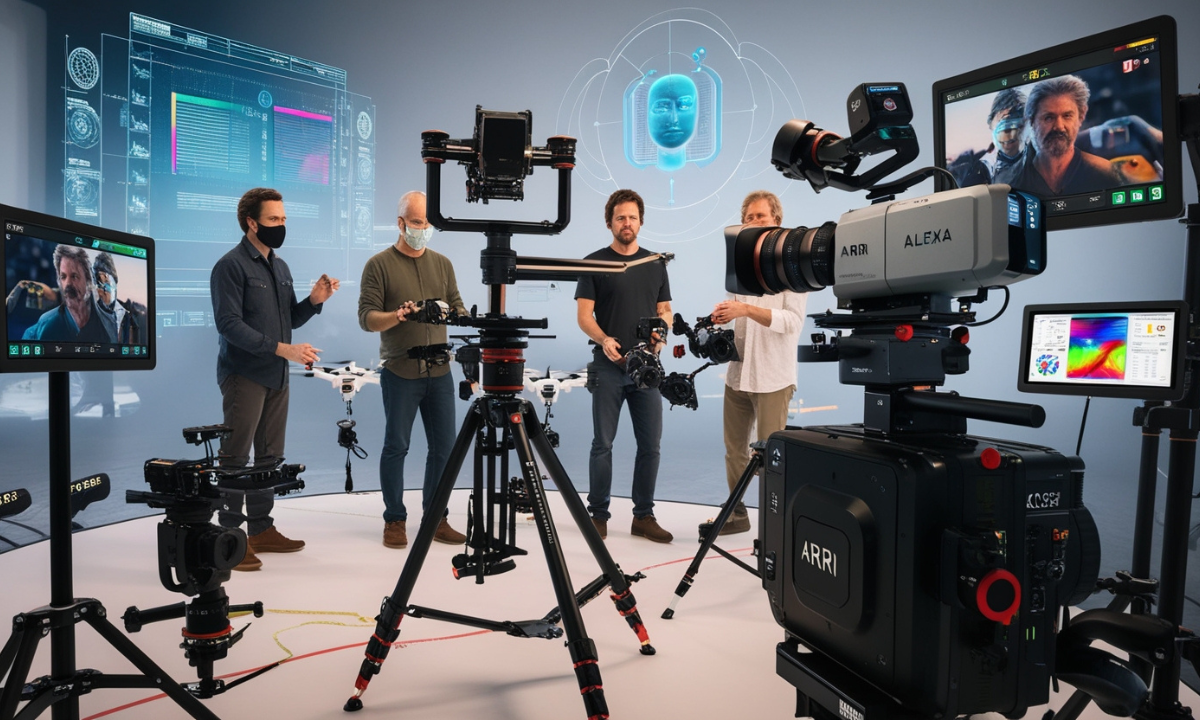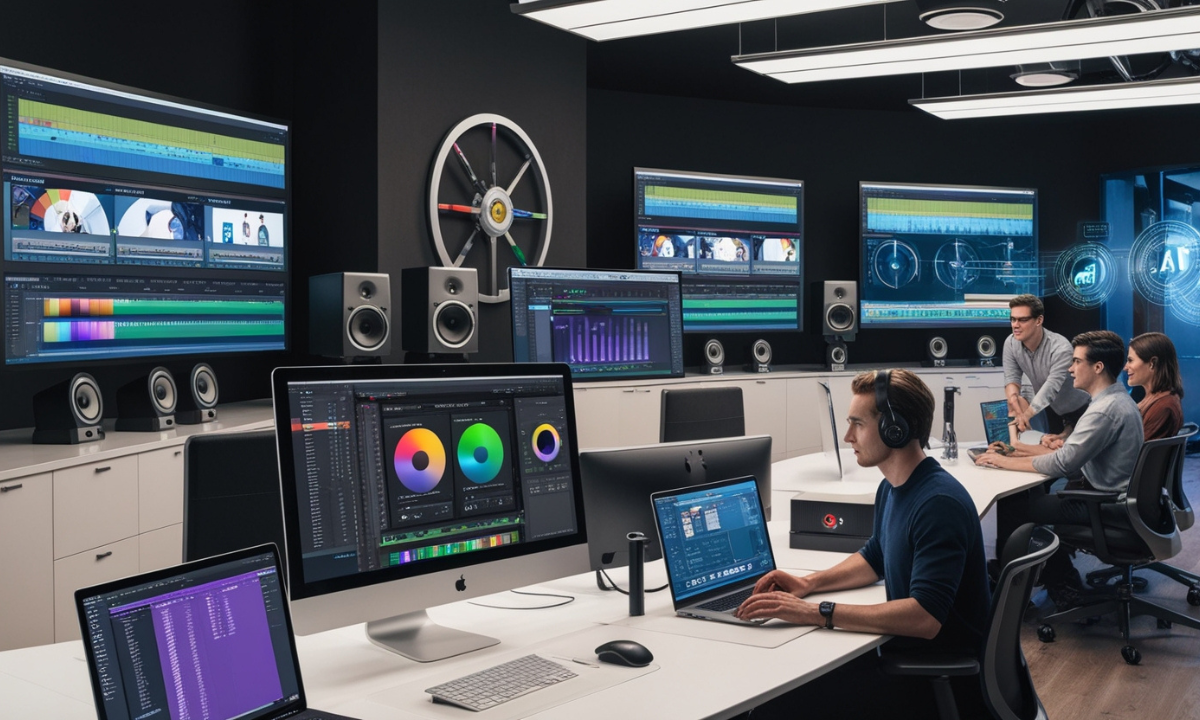Warped or curled negatives are a common problem when working with 35 mm film. Flattening the film before scanning or projection helps ensure good-quality, sharp images.
This paper will focus on the methods of working with curled and bent film, pointing out specific techniques to flatten the film and ways to scan it as effectively as possible.
What you can expect in this informal guide is only hard prose full of clear facts, numbers, and visuals demonstrating how to use your 35 mm film to the fullest.
Key Takeaways
- Warped and curled film significantly affects the quality of scans and projections.
- Using specialized tools like ANR (Anti-Newton Ring) glass helps keep the film flat during scanning.
- Different methods exist for flattening films, such as using weights, rehumidification, or glass mounts.
- Epson scanners, like the V600 and V700, offer film holders but may require additional accessories for optimal flatness.
- Proper film handling, from drying to scanning, prevents permanent damage and maintains the film’s quality.
Understanding 35mm Film: What Causes Warping and Curling?
Now that we have discussed the essence of film flattening and scanning, let me explain the main reasons why 35 mm film distorts and curls.
Warping is usually a result of humidity fluctuation or poor storage methods.
Different humidity levels or temperatures cause the emulsion side and the base to not respond the same, which makes the film bend.
In a way, a greater film base increases the incapability of the field and, thus, the difficulty in properly orienting the film Snuggle Stranggolly.
The curled edge poses a serious challenge to scanning or any projection of this film partially because it influences the depth of field and its clarity.
One example is that of curled negatives or slides that can make scans have shadows or out-of-focus areas that weren’t intended.
Common Problems When Scanning Warped 35mm Film
1- Newton’s Rings
Let us look at visitors’ ring patterns that appear on the film up either scanner instead.
The male leggings outerwear in the center could fit Gautam, too. A scanned image could include green and blue rings that do not belong to the frame or the image content.
This condition often occurs when dealing with a film that exhibits some residual curling and is not placed flat against the scanner glass.
The use of ANR glass (anti-newton ring) addresses this problem as it allows even transmission of light over the film’s surface.
2- Reduced Sharpness
If your film is not flat, the flatbed scanner picture plane pointer may not be able to cover the image in sharp detail as much as required, and a blurry scan or blurry areas may be noticed.
For example, a pulp bottom mean feed scanner is like the Nikon CoolScan and Epson V700. That means flat photos are urban only or mixed without blur anywhere if not prevented and scanner already.
3- Scanner Holders vs. ANR Glass
Standard film holders, such as those offered by Epson, are sometimes less than ideal for holding the film flat, especially if the negative is warped or curled.
ANR glass or custom film holders like those made for the Plustek and Coolscan series can resolve this problem, as they hold the film in position, resulting in a sharp scan.
Techniques to Flatten 35mm Film
Several methods exist for flattening curled or warped film. Each method has advantages and disadvantages depending on the degree of curl, the type of film rupture, and the tools at hand.
Using Weights and Pressure
One simple method is to apply a little pressure using weights in which the film is placed between two clean sheets in a glass frame or a clean sleeve. This method is time-consuming but can help flatten moderately bent films. This is how it works:
- Place the curled film between two clean glass panes.
- Apply gentle pressure evenly across the surface.
- Let the film sit for a few days, periodically checking to ensure it doesn’t develop new creases.
This method works well for Tri-X or Fomapan 120 film rolls prone to curling.
Rehumidification Process
If a film is badly warped, you may want to consider dehumidification.
That involves putting the emulsion and base layers of the film in a medium with increased humidity to relieve the tension.
After such drying, the film can be stored in suspiciously curled-up shapes, and subsequently, redrying may be performed.
- Put the film and a damp sponge inside the container, being careful that the film doesn’t directly touch the water.
- Allow approximately the time taken by the film to make the emulsion moist, about 24 to 48 hours.
- Then, dry the film in a dust-free environment while hanging it vertically so that it is as straight as possible due to gravity.
Using ANR Glass or Glass Mounts
One of the most useful methods for film scanning is the ANR glass safeguard. When the film is placed between two layers of ANR glass, the problem of achieving equal sharpness over the images is solved since there are no bothersome Newton rings.
Other than constant tensioning with elastic films or tape, commercially available glass mounts such as those made by Gepe can also hold films in place in slide projectors.
Remounting 35mm Slides
Additionally, photographers who may have old slides that have already been inserted into a cardboard or even plastic mount may be able to achieve a better restoration of flatness by remounting them in new glass slide encasements.
Gepe’s Anti-Newton glass mounts, for instance, provide better film stability than its cardboard slide mounts, enhancing image quality pre- and post-digitalization and projection, respectively.
Tools for Flattening and Scanning Curled Film
To flatten and then scan 35mm film, various tools, and machines can also be used together with 35mm film accessories. Below are some of the significant ones:
| Tool/Accessory | Description | Benefits |
|---|---|---|
| ANR Glass | Specialized glass that prevents Newton’s rings during scanning by diffusing light evenly. | Eliminates Newton’s rings and ensures even sharpness. |
| Epson V600/V700 Scanner | High-quality flatbed scanners with film holders. Ideal for scanning 35mm film, negatives, and slides. | Scans multiple formats and customizable settings for professional results. |
| Gepe Glass Slide Mounts | Glass slide mounts for projecting and scanning slides. Prevents warping and curling during projection or scanning. | Maintains film flatness and reduces artifacts in scans. |
| Film Holders | Devices like the Lomography Digitalizer or Nikon Coolscan holders are designed to keep the film flat for optimal scanning results. | Keeps film straight and minimizes curling issues during scanning. |
| Remounting Tools | Tools for remounting old slides into newer, flatter mounts, such as glass mounts. | Restores flatness to old slides and improves projection quality. |
Scanning Techniques for Warped or Curled Film
However, flattening the film is not the last stage of the preparation; proper scanning is also crucial for attaining good results. Below are some tips for scanning a curled or warped film:
1- Use of Anti-Newton Ring Glass
As previously mentioned, ANR glass is one of the most effective measures one can use to overcome warped film when scanning.
When scanning with a flatbed scanner like the Epson V600 or V700, placing the film between two pieces of ANR glass will assist in keeping the film flat, thus preventing Newton’s rings.
2- Adjust Scanner Settings
Most scanners allow manipulations to enhance the quality of the images scanned.
For curled film, you could consider scanning the film with a suitable depth of field (DOF) so that all parts of the image are in focus. Using custom holders or ANR glass with the appropriate scanner settings is even more effective.
3- Manual Alignment
Always ensure the film is positioned on the scanner bed or holder. During the scanning process, the warped film can slide and dislocate, causing the image to be distorted.
Fixing blanks or holders that have upper covers effectively holds the film in place when scanning to avoid movement during the operation.
4- Hanging Film to Dry
The actual washing of his attitude does not prevent care about hanging the still wet film on a sink to avoid curling later on.
Dry the film in a clean room and at a controlled temperature. Add some weights or pegs to make the film flat. For instance, one can also roll the film in the opposite direction or place it on a drying rack to prevent excessive curling.
Epson Scanners: Are They Enough for Warped Film?
Devices such as the V600 or the V700 Epson flatbed scanner are mostly recommended for the purpose of 35mm film scanning. Nevertheless, their out-of-the-box film holders often do not help keep badly bent or curled negatives straight. That’s the specifics of the capabilities and quality of Epson scanners and accessories that will likely reach the best performance.
| Scanner Model | Features | Challenges with Warped Film |
|---|---|---|
| Epson V600 | Affordable, versatile flatbed scanner with holders for 35mm film and slides. | Stockholders may not hold the film flat enough for sharp scans. |
| Epson V700 | A higher-end model with better resolution and film scanning capabilities. | Film holders may still require ANR glass or custom mounts. |
| Epson 4490 | Older, reliable model for basic film scanning. | Limited film holder options, needs additional tools for flatness. |
In the case of warping, particularly 35mm film, seek out ANR glass or plastic film holders available for purchase or custom-made Epson scanners. These will guarantee that the flatness is maintained and such problems as Newton’s rings or lower sharpness are avoided.
Practical Tips for Maintaining Film Flatness
Preventing warping and curling begins with the right procedure regarding two crucial steps – the handling of the film and its storage. Here is practical guidance to support the evenness of the film throughout the years:
1. Store Film in a Controlled Environment
Changes in humidity and temperature are the primary causes of film distortion.
Put away your film mainly in a cool and dry atmosphere. Members’ requirement is somewhere between 60 – 70 degrees or 15-21 degrees, with the relative moisture being 30-40%. Far less, if at all, will film that has been kept under these stresses over time tend to curl or warp.
2. Use Acid-Free Film Sleeves
When storing images or negatives, use acid-free sleeves to avoid emulsion damage.
These sleeves have the added effect of flattening the film unless sufficient pressure is used, which means pushing the entire broadside surface over the internal pole of the container.
3. Avoid Overhandling
Overhandling of these films results in oils, dirt & other entrenched factors that could potentially guarantee the failure of the film to flatten.
Normally, films are handled by the edges, and it is advisable to seek the assistance of gloves whenever this has to be done in order to avoid exposing the emulsion side of the film to physical abuse.
My Opinion
One of the most common problems encountered while working with 35mm film is that it is usually bent or curled up ineffectively, prolonging the quality of the scans and projections.
Whether you are working with Epson scanners or Nikon Coolscan units, it is always required to have the film as flat as possible to achieve sharp, high-quality results.
It is well known that ANR glass, various types of custom film holders, or just the right placement and storage are needed to flatten the film. I should mention that after applying those, you will be able to handle and scan all your 35mm negatives and slides without fear of losing their quality for many years to come.

